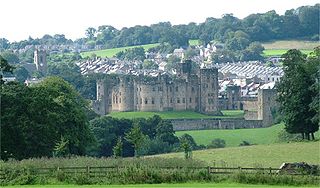
Alnwick is a market town in Northumberland, England, of which it is the traditional county town. The population at the 2011 Census was 8,116.
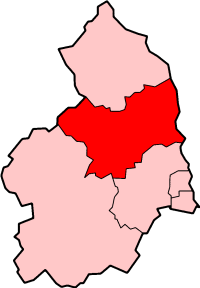
Alnwick was a local government district of Northumberland, England. Its council was based in the town of Alnwick and the district had a population of 31,029 according to the 2001 census.

The Tenantry Column is a monument to the south of Alnwick town centre, in Northumberland, England. It was erected in 1816 by the tenants of Hugh Percy, 2nd Duke of Northumberland in thanks for his reduction of their rents during the post-Napoleonic depression. It is a Doric column standing 83 feet (25 m) tall and surmounted by a lion en passant, the symbol of the Percy family. Four more lions stand on a platform at the base of the column. A muster roll of the Percy Tenantry Volunteers was sealed into the foundation. The structure was granted protection as a listed building in 1952 and since 1977 has been listed in the highest category, grade I.

The Nelson Memorial, Swarland is a white freestone obelisk at Swarland in north Northumberland, England. Erected in 1807, two years after the death of Horatio Nelson, 1st Viscount Nelson, victor of the Battle of Trafalgar, it was placed by his friend and sometime agent, Alexander Davison, who owned an estate centred on the now demolished Swarland Hall. It is a Grade II listed monument.

Manchester Royal Infirmary (MRI) is a large NHS teaching hospital in Chorlton-on-Medlock, Manchester, England. Founded by Charles White in 1752 as part of the voluntary hospital movement of the 18th century, it is now a major regional and national medical centre. It is the largest hospital within Manchester University NHS Foundation Trust, and based on its Oxford Road Campus in South Manchester where it shares a site with the Royal Manchester Children's Hospital, Manchester Royal Eye Hospital and Saint Mary's Hospital as well as several other educational and research facilities. The Hospital is also a key site for medical educational within Manchester, serving as a main teaching hospital for School of Medical Sciences, University of Manchester.
The Northumberland Gazette is a weekly newspaper published in Alnwick, Northumberland, England. It serves Alnwick, Amble, Seahouses, Rothbury, Wooler and outlying districts.

Alnwick Town Association Football Club is a football club based in Alnwick, Northumberland, England. They are currently members of the Northern Alliance Premier Division and play at St James' Park.

The Ancoats Hospital and Ardwick and Ancoats Dispensary was a large inner-city hospital located in Ancoats, to the north of the city centre of Manchester, England. It was built in 1875, replacing the Ardwick and Ancoats Dispensary that had existed since 1828. The building is now Grade II listed.
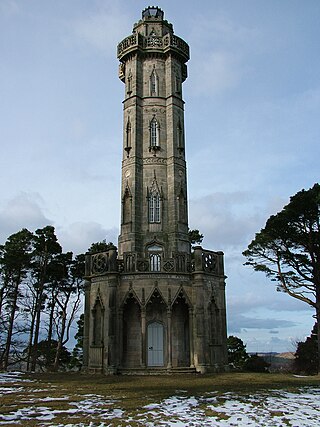
Brizlee Tower is a Grade 1 listed folly set atop a hill in Hulne Park, the walled home park of the Duke of Northumberland in Alnwick, Northumberland. The tower was erected in 1781 for Hugh Percy, 1st Duke of Northumberland, and commands extensive views over North Northumberland and the Borders.

City Hospital is a major hospital located in Birmingham, England, operated by the Sandwell and West Birmingham Hospitals NHS Trust. It provides an extensive range of general and specialist hospital services. It is located in the Winson Green area of the west of the city.

The A1068 is a road in northern England that runs from Seaton Burn in North Tyneside to Alnwick in Northumberland. The section between Ellington and Alnmouth is signposted as part of the Northumberland Coastal Route.
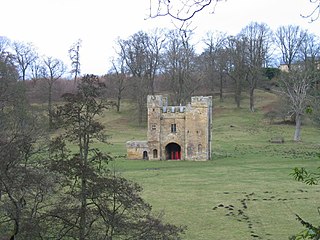
Alnwick Abbey was founded as a Premonstratensian monastery in 1147 by Eustace fitz John near Alnwick, England, as a daughter house of Newhouse Abbey in Lincolnshire. It was dissolved in 1535, refounded in 1536 and finally suppressed in 1539. The Alnwick Abbey site is located just within Hulne Park, on the bank of the River Aln. The only visible remnant is the impressive 14th-century gatehouse, a Grade I listed building.

Ros Hill, also known as Ros Castle due to the 3,000-year-old Iron Age hill fort on its summit, is a hill in the county of Northumberland in northern England. It is the highest point of a low range of hills stretching from Alnwick to Berwick-upon-Tweed — the Chillingham Hills. Other tops of the Chillingham Hills include Titlington Pike, Dod Law and Doddington Northmoor. However, Ros Hill is significantly higher than these and towers over the surrounding landscape with easily enough relative height to make it a "Marilyn".
The Cornhill Branch was a 35.5-mile (57 km) single track branch railway line in Northumberland, England, that ran from Alnwick on the terminus of the three mile long Alnmouth to Alnwick line via ten intermediate stations to a junction on the Tweedmouth to Kelso Branch line at Cornhill-on-Tweed.

The Royal Lancaster Infirmary (RLI) is a hospital in the city of Lancaster, England. It lies to the south of the city centre, between the A6 road and the Lancaster Canal. It is managed by the University Hospitals of Morecambe Bay NHS Foundation Trust.

William Davison (1781–1858) was born in Alnwick. He was a pharmacist, apothecary, printer, engraver/etcher, bookseller, stationer, publisher, bookbinder, librarian/owner of a circulating library, and stereotyper/stereotype founder. His main employment became printing/publishing but he was always dedicated to social reform through education.

Kingston General Hospital was an acute general hospital in Kingston upon Hull, England.

Brownlow Hill infirmary was a large workhouse infirmary in Liverpool, notable for its role in advancing training of nurses. The workhouse was demolished in 1931, and the site is now occupied by Liverpool's Catholic cathedral.
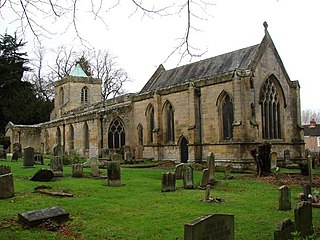
St Mary's, also known as St Mary the Virgin, is an ancient Grade I listed Church of England parish church located in Morpeth, Northumberland. The church is to the south of the River Wansbeck in Morpeth, which is an area known as High Church. The oldest remaining parts of the structure belong to the Transitional Early English style of the mid to late 12th century, but the church is mostly in the 14th century style. The church, which was the main Anglican place of worship in the area until the 1840s, has been restored several times after being destroyed by the Scandinavians, Scottish and Cromwellians in the 10th and later centuries.

Alnwick Town Hall is a municipal building in the Market Place, Alnwick, Northumberland, England. The structure, which was the meeting place of the common council, is a Grade I listed building.



















